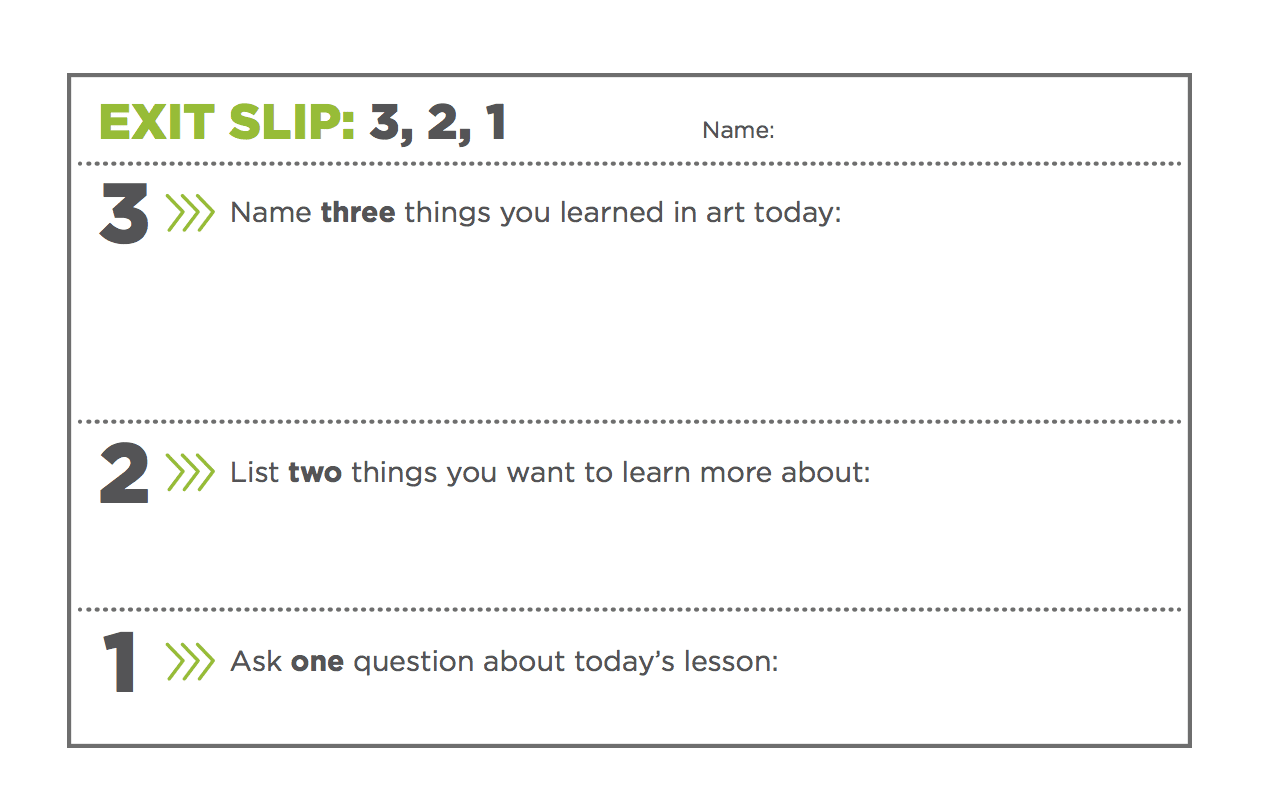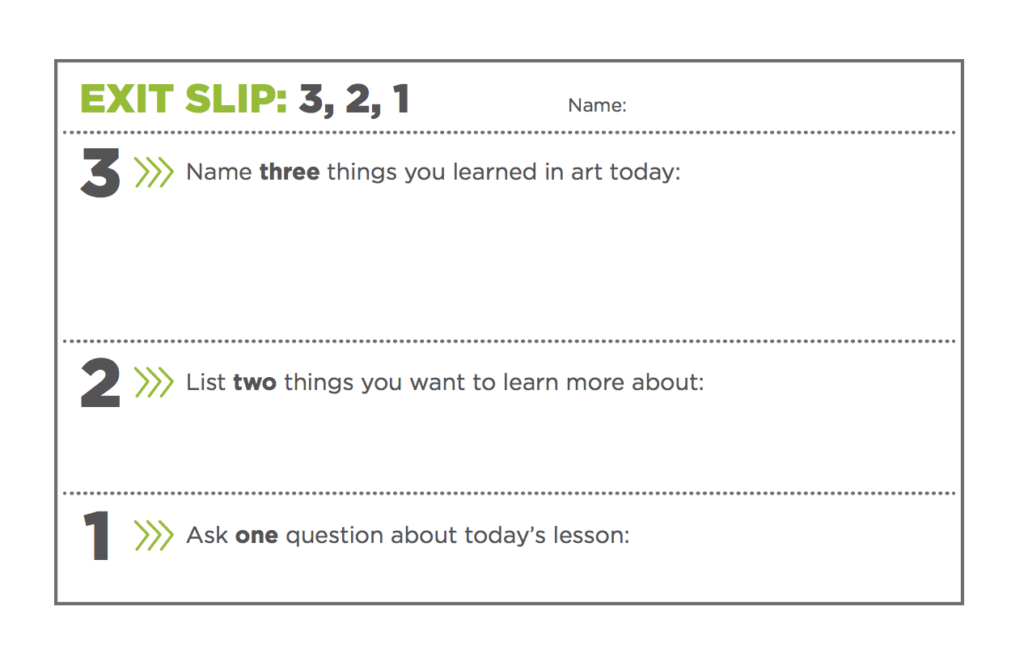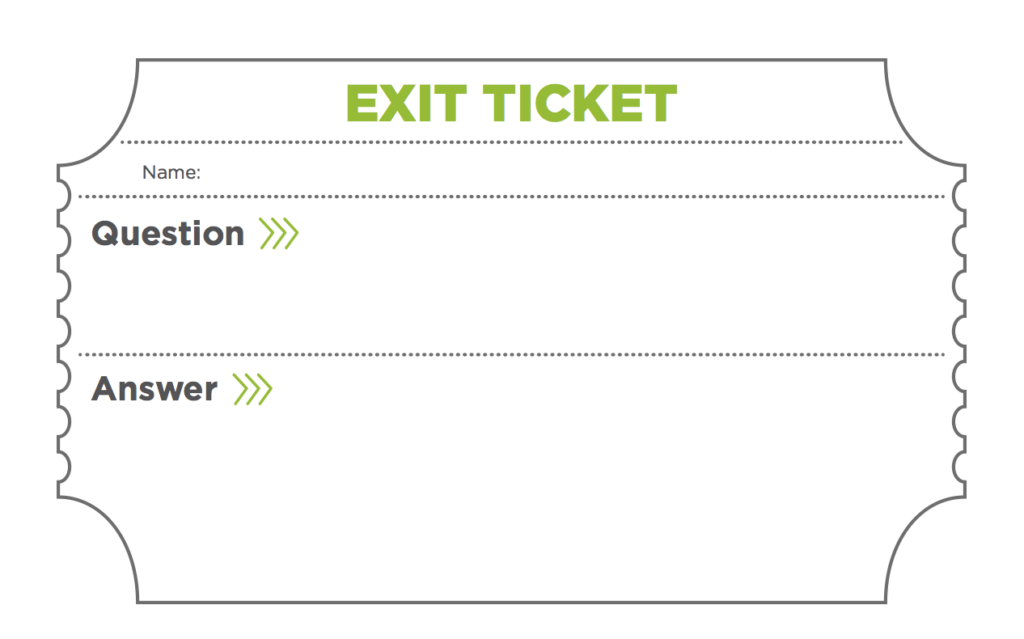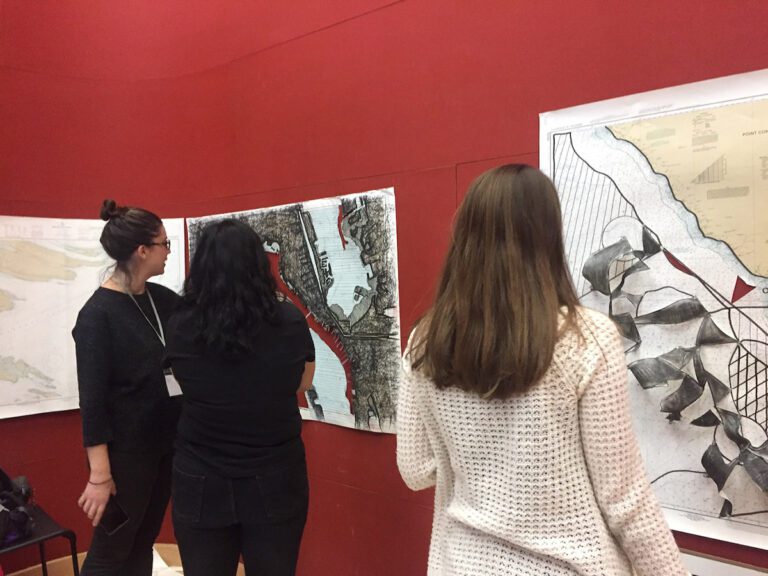What kind of formative assessments do you use in your classes? One simple, yet powerful type I love to use is the exit ticket.
An exit ticket can be done in two or three minutes at the end of class. Students fill out a small form and leave it as they exit the classroom.
Exit tickets provide quick information about student learning and understanding. They also require the student to apply knowledge from the lesson, which helps to deepen learning. Finally, exit tickets challenge students to synthesize information and express their understanding in their own words.
These tickets can take any form you like. They are generally short (only a couple of questions) and provide students with a chance to share what they learned from the lesson.
Here are three kinds of exit tickets to try in your classroom.
3, 2, 1 Exit Ticket
Here, students are asked to share three things they learned, two things they want to learn more about, and one question they have. This strategy can work at any time during a lesson, but it works particularly well as an exit ticket. You can download printable 3, 2, 1 exit tickets below.
This is a great way to get a clear overview of student understanding. Plus, if I notice many students have a similar question, I know I need to address it in our next class.
Using exit tickets is a great way to gather information. But how you use that information is even more important. That’s why students in the Assessment in Art Education course spend time learning how continuous and ongoing formative assessment can drive instruction. Be sure to check it out!
Blank Exit Ticket
If you only have a small amount of time left at the end of the class, you might not have time for the 3, 2, 1 strategy. For these instances, a one-question exit slip, like the downloadable example below, is a great option.
You can choose any question you’d like. Of course, it can relate to the content of the day’s lesson, but you can consider other things as well.
Some examples might include:
- Asking students how they felt about a specific instructional strategy you used
- Asking students what art material they most want to learn about next
- Asking students to assess themselves on things like focus or time management
One other idea is to ask students to give you direct feedback on your instruction. For example, you might ask students how you can better help them understand the content. I have learned a lot about my students and my teaching through the use of this strategy!
Sticky Notes
Sticky notes are great for exit tickets. I write a question on the board and have my students stick their notes directly on the board as they finish.
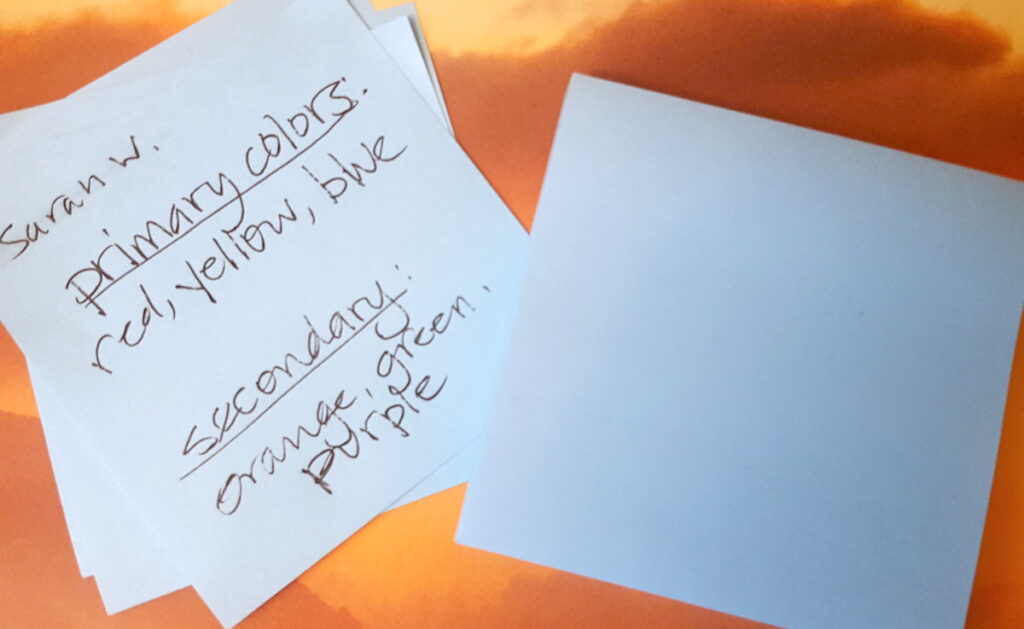
This allows me to use what I see on the notes during closure if I have time. And like the other forms of exit tickets, I can quickly assess what I may need to emphasize in my next class. I can then save the notes as data to use later on.
Whatever form of exit ticket you choose, you are likely to find them valuable. They are quick and easy, as well as a powerful tool to assess student learning.
Do you use exit tickets?
What is your favorite form of exit ticket?
Magazine articles and podcasts are opinions of professional education contributors and do not necessarily represent the position of the Art of Education University (AOEU) or its academic offerings. Contributors use terms in the way they are most often talked about in the scope of their educational experiences.
